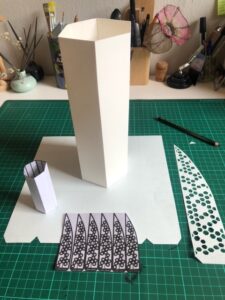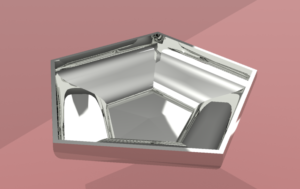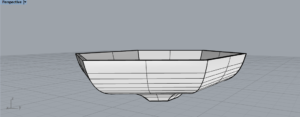Designs on Silver Exhibition
 Louis Osman
Louis Osman
While scrolling through the exhibition, I was immediately drawn to Louis Osman’s sketches of his silver goblets. My eye was captured by the wonderful colour contrast between the white soft pastels he has used against the brown paper background. The designs are then brought to life by the dark charcoal or soft pastel shading. The realised design is just as captivating with Osman’s beautifully textured metal and both the contrasting shapes and colours.



I also loved Louisa Osman’s ‘Architectural Heritage Medal’. Again, I was drawn to the piece by the sensitive soft pastel sketches, this is a technique of design drawing I would like to try because of the charming and detailed finish it achieves. The actual piece is interesting as well because of the bronze casting method which makes the piece fell almost ancient.
Angela Cork



I love Angela Cork’s rosewater dish because its visible link to her research. The deliberate folds in her metalwork clearly show her interest in her subject of inspiration. The choice of boat sails is an intriguing subject due to their ever changing form. This is an area I am interested in, the concept of jewellery or silversmithing appearing to change depending on the viewpoint.
Theresa Nguyen


I was fascinated by Theresa Nguyen’s work because of it’s relevance to the form and nature brief for this course. The final form is so true to life that it almost looks as if it has been cast, but the artist has achieved this look by folding and textured hammering. I also love the tactile nature of this piece, the folds in the leaves give it a sense of movement, making me want to hold the piece and fully understand its form.
Junko Mori



Mori’s ‘British Hedgerow Cups’ are a beautiful representation of the interesting form found in the countryside. The pieces perfectly illustrate the seed pods and plants that make up hedgerows and the individual handmade punches are a playful way of showing this. I was also drawn to these designs as chasing is a technique I’m really interested in learning about as I’d love to be able to transfer illustration I’ve done onto metal in some way.



















































